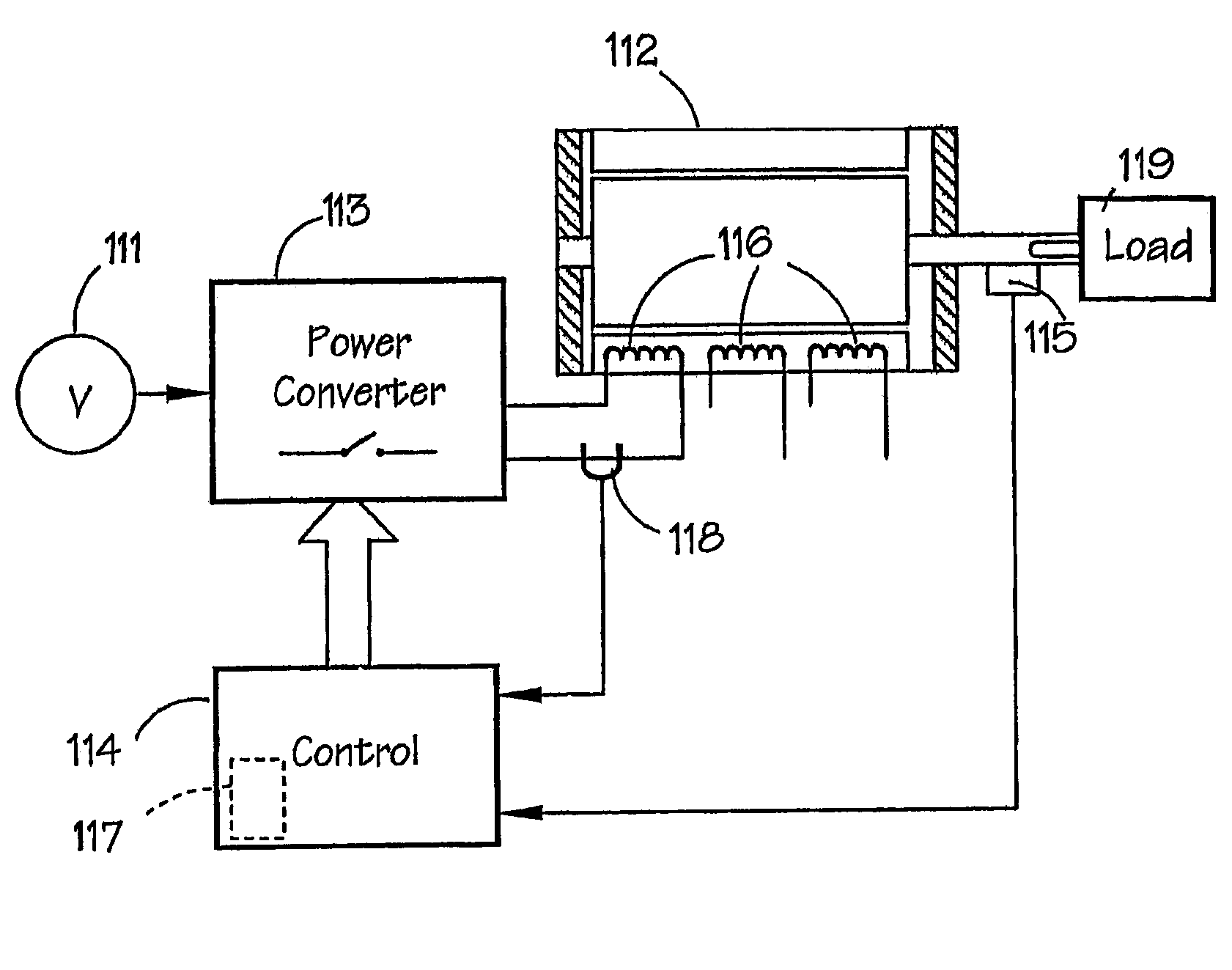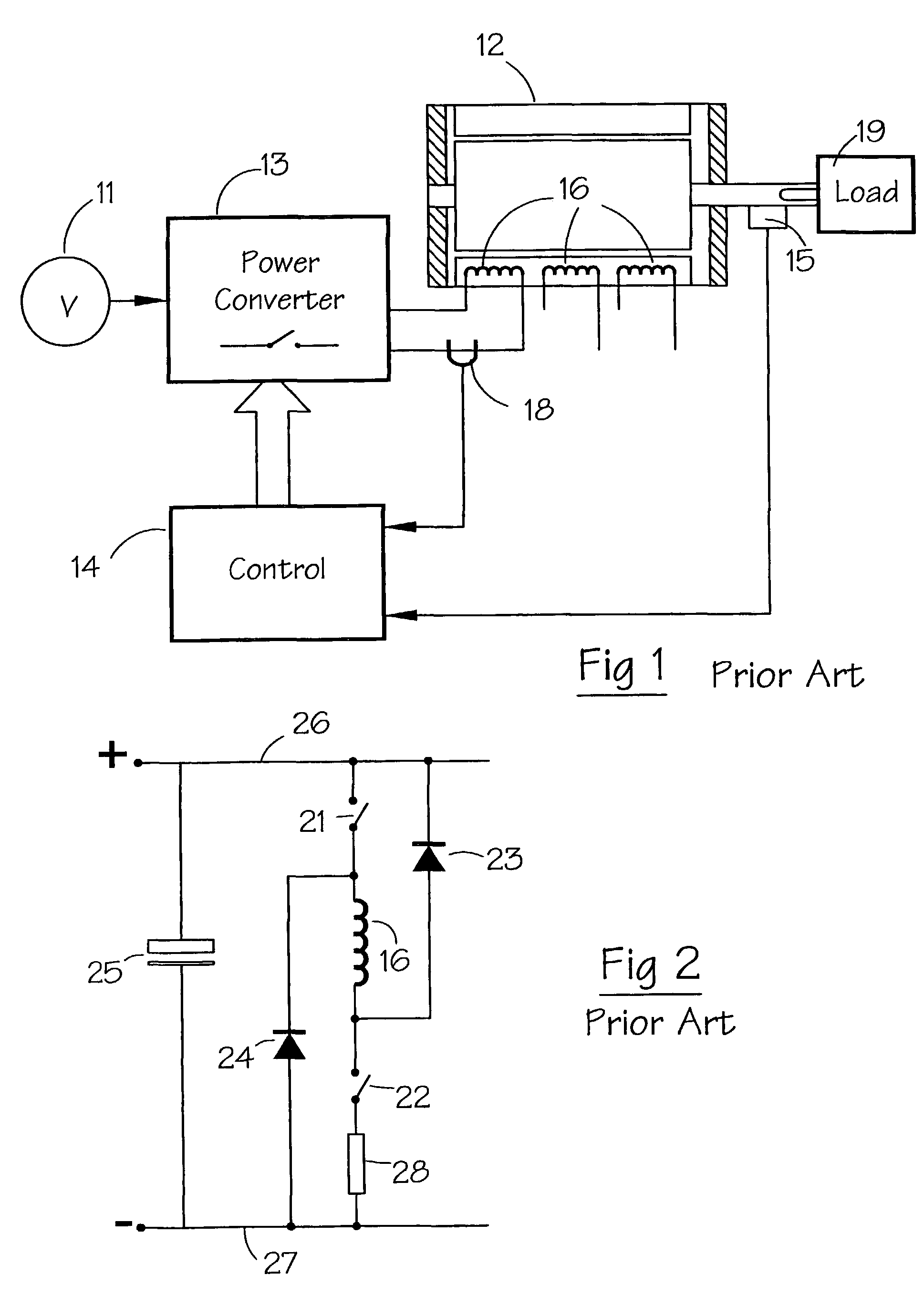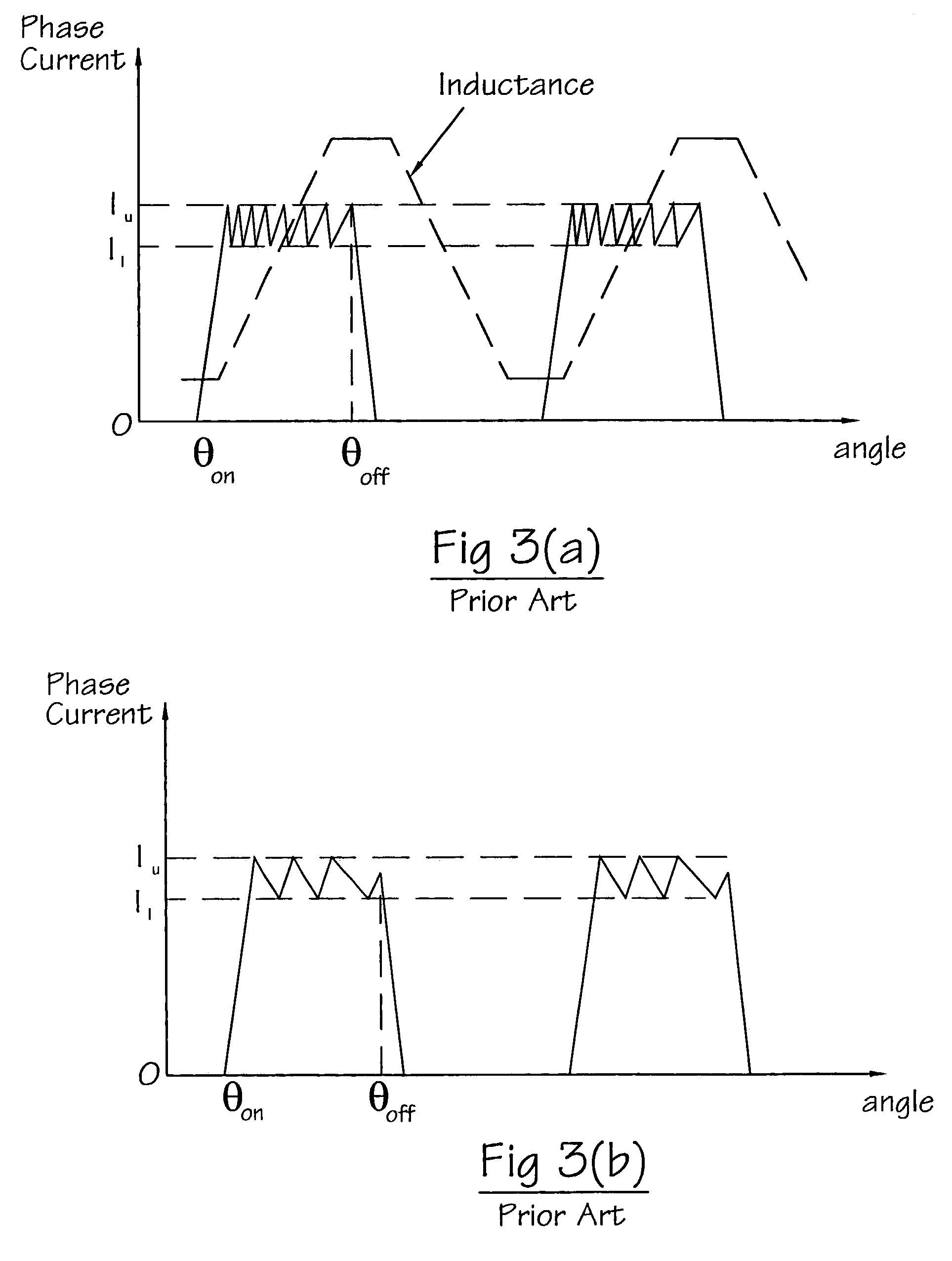Control of a switched reluctance drive
a technology of reluctance drive and control device, which is applied in the direction of synchronous motor starters, ac motor stoppers, electrical equipment, etc., can solve the problems of inability to control the output of the controller, small differences in parameter values that can produce undesirably large output variations, and inability to store controller spa
- Summary
- Abstract
- Description
- Claims
- Application Information
AI Technical Summary
Benefits of technology
Problems solved by technology
Method used
Image
Examples
Embodiment Construction
[0041]The phase inductance cycle of a switched reluctance machine is the period of the variation of inductance for the, or each, phase; for example the period between maxima when the rotor poles and the relevant respective stator poles are fully aligned. The illustrative embodiments to be described use a 3-phase switched reluctance drive, but any number of phases could be used, with the machine in either motoring or generating mode.
[0042]The method of control according to aspects of the invention uses a combination of switch-on angle, switch-off angle and current level to trigger an optional period of freewheeling which controls the standing current, Is, in the phase. Unlike previous methods of control in the continuous current mode, this method allows smooth control of the standing value of current with no abrupt dropping out of continuous current.
[0043]FIG. 7 shows a set of control parameters chosen according to embodiments of the invention. In operation, the phase is switched on ...
PUM
 Login to View More
Login to View More Abstract
Description
Claims
Application Information
 Login to View More
Login to View More - R&D
- Intellectual Property
- Life Sciences
- Materials
- Tech Scout
- Unparalleled Data Quality
- Higher Quality Content
- 60% Fewer Hallucinations
Browse by: Latest US Patents, China's latest patents, Technical Efficacy Thesaurus, Application Domain, Technology Topic, Popular Technical Reports.
© 2025 PatSnap. All rights reserved.Legal|Privacy policy|Modern Slavery Act Transparency Statement|Sitemap|About US| Contact US: help@patsnap.com



